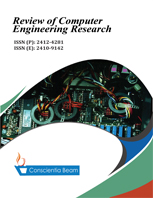Creating a deep learning model using a Swin Transformer and tree growth optimisation to classify brain tumour
DOI:
https://doi.org/10.18488/76.v10i3.3500Abstract
The brain, which has billions of cells, is the largest and most complex organ in the human body. A brain tumor is the primary malignant intracranial tumor of the central nervous system that develops most frequently. They are frequently found too late for effective therapy. The use of minimally invasive procedures is necessary to make a diagnosis and monitor a tumor of the central nervous system's response to therapy. There exist three distinct classifications of tumors, namely benign, premalignant, and malignant. This study concentrated on using deep learning to identify brain tumors (BT) using normal or abnormal brain pictures. Numerous methodologies have been employed to augment the quality of images, encompassing image smoothing and noise restoration procedures. The present study employs the proposed Adaptive Weighted Frost filter as it has been identified as the optimal approach for noise reduction in BT photographs. The Swin Transformer technology is employed for the purpose of classifying the BT. The efficiency of the Tree Growth Optimization (TGA) model for Swin transformer hyper parameter tweaking has been evaluated in this work. Before using our unique BT dataset for extensive experimental comparisons, medical specialists carefully examined it down to the pixel level. The predicted model achieved the greatest F1 score of 99.82% and the maximum accuracy, recall, and 100%, respectively.





